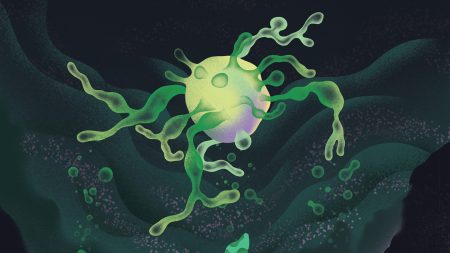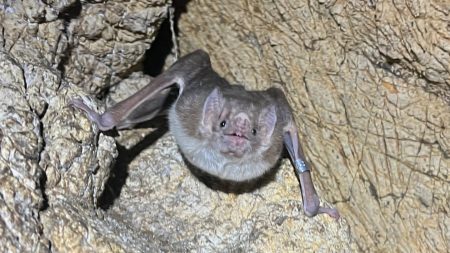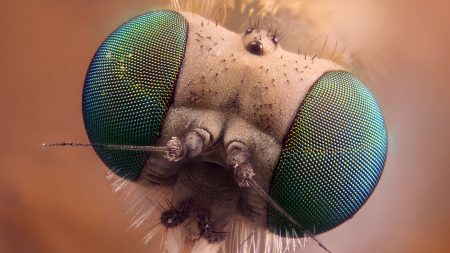The Science Behind Rudolph’s Glowing Nose: More Than Just Christmas Magic
“Rudolph the Red-Nosed Reindeer” has become an inescapable part of holiday tradition, with the story of a bullied reindeer whose glowing nose ultimately saves Christmas resonating across generations. While we might dismiss Rudolph’s luminous snout as pure fantasy, science suggests that a light-emitting nose isn’t as far-fetched as it might initially seem. The natural world is filled with creatures that produce their own light, making Rudolph’s special trait more scientifically plausible than you might think.
In nature, the ability to produce light comes from a fascinating biological process called bioluminescence. According to Danielle DeLeo, a marine biologist at Florida International University, this natural light show requires just two key components: a compound called luciferin and an enzyme called luciferase. When these components interact with oxygen inside cells, they create the magical glow we see in creatures like fireflies and deep-sea anglerfish. The color spectrum of this natural illumination is remarkably diverse – from the bluish-green lanterns of anglerfish to the yellow flash of fireflies, and even the red glow of certain insects and deep-sea fish. Nature has perfected this light-producing chemistry across various species, each with its own specialized version of this remarkable adaptation.
While the idea of a glowing reindeer might stretch scientific credibility, it’s not entirely implausible from an evolutionary perspective. DeLeo notes that bioluminescence has independently evolved at least 100 times throughout the history of life on Earth, demonstrating nature’s remarkable ability to develop light-producing capabilities when it provides an evolutionary advantage. Though most bioluminescent organisms are found in the ocean, and no known mammals possess this ability naturally, the repeated emergence of this trait across the tree of life suggests it’s not impossible for a reindeer to develop such an adaptation. If Rudolph were to evolve a glowing nose, it would represent a groundbreaking adaptation in the mammalian world, but one that follows an established evolutionary pattern.
From a practical perspective, Rudolph’s red-colored nose would actually be the ideal choice for navigating through foggy Christmas Eve skies. Nathaniel Dominy, an evolutionary biologist at Dartmouth College, explains that red light has the longest wavelength of any color visible to humans, making it less susceptible to scattering by water droplets in the air. This physical property means red light penetrates fog more effectively than other colors, making it the perfect biological headlight for a reindeer tasked with guiding Santa’s sleigh through challenging weather conditions. This scientific fact adds a layer of unexpected realism to the beloved holiday tale, suggesting that Rudolph’s red nose is actually the optimal color for the job he’s entrusted with.
Physics introduces another fascinating aspect to Rudolph’s story that most people never consider: the Doppler effect. Laura Driessen, a radio astronomer at the University of Sydney, explains that to an observer on the ground, Rudolph’s glowing nose might not appear red at all as he zooms across the sky. When a light source moves toward an observer at extremely high speeds, its wavelength compresses, shifting toward the blue end of the spectrum. Conversely, as the light source moves away, the wavelength stretches, shifting toward red. Given Santa’s need to visit countless homes worldwide in a single night, his sleigh would necessarily reach extraordinary speeds where these effects become noticeable to the human eye.
The visual consequences of these physics principles create a spectacular image. If Santa’s sleigh were traveling at just 10% of the speed of light, Rudolph’s approach would transform his red nose to appear orange to observers on the ground. As he flies away, his nose would redshift to such a deep crimson that it would appear almost black. Even more remarkably, this color-shifting phenomenon would affect everything about the sleigh and its team – the typically brown reindeer and wooden sleigh would take on a greenish appearance when approaching, then shift beyond the visible spectrum into infrared as they depart, making them virtually disappear from sight. This scientific reality adds a magical dimension to the story that even its creators likely never imagined.
The biological cost of Rudolph’s special ability would be significant, as producing light requires substantial energy. Dominy points out that maintaining a brightly glowing nose while flying at incredible speeds would demand tremendous caloric intake. This scientific insight offers a new perspective on holiday traditions – those cookies we leave for Santa might be better directed toward his hardworking reindeer, especially Rudolph. His bioluminescent nose would require plenty of sugar to power its glow throughout the Christmas journey. So this holiday season, when preparing treats for Santa, consider leaving some extra cookies for the remarkable reindeer with the scientifically fascinating nose that truly does “guide the way.”














